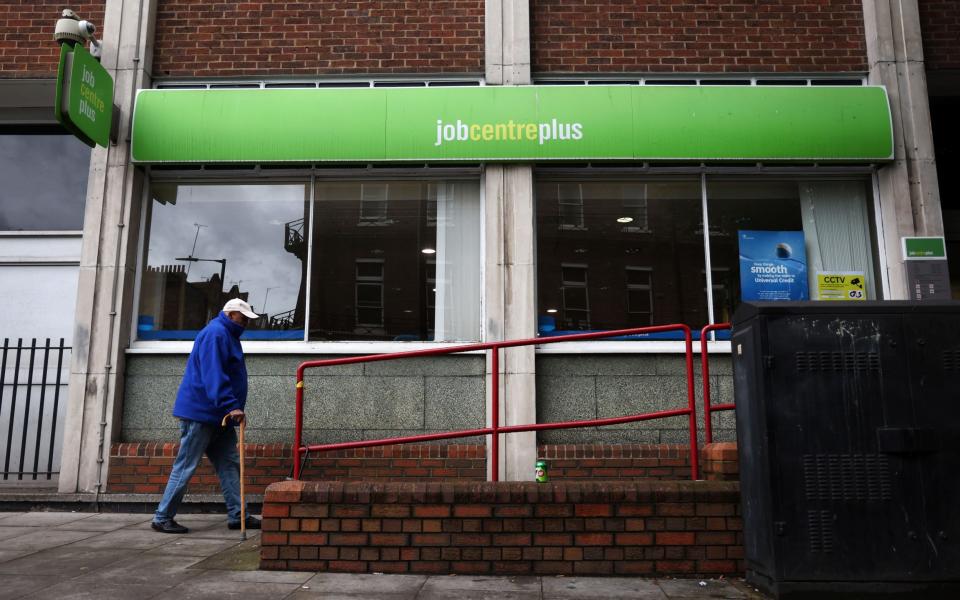Ministers plan to replace low-paid migrants with unemployed Britons

The Government is launching a new initiative to fill low-paid “migrant roles” with jobless Britons, The Telegraph has learned.
Officials at the Department for Work and Pensions are drawing up measures aimed at encouraging benefit claimants to fill vacancies in sectors reliant on low-paid migrants.
Last month, the salary threshold required for skilled foreign workers to get a visa rose to £38,700 a year, up from the previous £26,200, as part of a wider Government drive to reduce net migration.
The policy has been criticised by some business leaders who warn that companies are already struggling to recruit enough staff, and tightening the visa rules will make it even harder.
Mel Stride, the Work and Pensions Secretary, is leading a new push to resist calls to relax migration rules and instead focus on filling job vacancies with the millions of out-of-work Britons.
Statistics released last month show that the number of those classed as “economically inactive”, meaning they are neither in a job nor looking for one, has ballooned to 9.25 million post-pandemic.

Most of that increase can be attributed to a huge spike in long-term sickness, which has added 717,000 people to the benefits bill since the start of 2020.
Young people are driving the trend, with people in their early 20s now more likely to be signed off than 40-year-olds.
As a result, there are now 2.8 million on the long-term sick list – exactly double the number of unemployed Britons who are looking for a job.
Mr Stride has set up a new ministerial taskforce which will come up with targeted measures to encourage benefit claimants to re-train and take up roles in sectors including construction, manufacturing, logistics, care and hospitality.
Measures such as incentive payments for employers who take on new apprentices, launching apprenticeship schemes and skills bootcamps, setting up job centre training schemes and cutting red tape holding back domestic recruitment, are all under consideration by ministers.
Welfare reform
A source close to Mr Stride said that he “strongly believes that welfare reform should be at the heart of the Government’s plans to cut migration and build a higher wage, higher skilled economic model”.
They added: “We’re seeing really strong wage growth at the moment but now we want to expand the help for businesses so they can take on more of the candidates currently stuck on out-of-work benefits.
“In short, our plan is to break the twin cycle of low-skilled cheap labour and welfare dependency, and instead focus relentlessly on unlocking the potential of the domestic workforce too often hidden away in communities across Britain.”
Another part of the initiative will see job centres proactively encourage benefits claimants to either train or apply for a role in one of these sectors.
This is currently underway in 20 hotspot areas – where there is high unemployment and also a high number of vacancies in these sectors – to pilot the scheme, ahead of a nationwide rollout.
Net migration
Official figures, published this year, show that net migration is set to drive the population to more than 70 million by 2026 – 11 years earlier than predicted.
The Office for National Statistics (ONS) has estimated that net migration will increase Britain’s population by nearly 10 per cent, or 6.1 million, by mid-2036.
That is equivalent to a population of two and a half times the size that of Greater Manchester, spanning a rise from 67 million to 73.7 million between mid-2021 and mid-2036.
The ONS had previously estimated net migration – the difference between the numbers arriving and leaving the UK – would be around 245,000, but now predicts that it will be 315,000 a year, 28 per cent higher.
As a result, it has had to bring forward the date at which the UK population will pass 70 million from 2037 to 2026.
The forecasts blow apart the Government’s 2019 manifesto pledge to bring down the overall rate of net migration from its then level of 226,000.
Cut arrivals
Last year, the Home Office pledged to deliver the biggest ever reduction in net migration, unveiling a package of measures aimed at cutting the number of arrivals by 300,000.
The package of measures included the salary threshold required for skilled foreign workers to get a visa rising £38,700 a year.
The change is predicted to cut immigration by 50,000, but health and social care visas will be exempted so that the NHS and care homes can still recruit from abroad at rates as low as £23,200.
The package also included banning foreign care workers from bringing family members into the UK and scrapping a scheme which allows companies to pay overseas staff 20 per cent below the going rate in shortage areas.
It has prompted anger from trade unions representing the health sector, which is facing workplace shortages and will be impacted by the tighter visa regime.
Christina McAnea, the general secretary of the Unison union, said at the time that the changes would “spell total disaster for the NHS and social care” and called the policies “cruel” and “disastrous”.

 Yahoo Sport
Yahoo Sport 






































